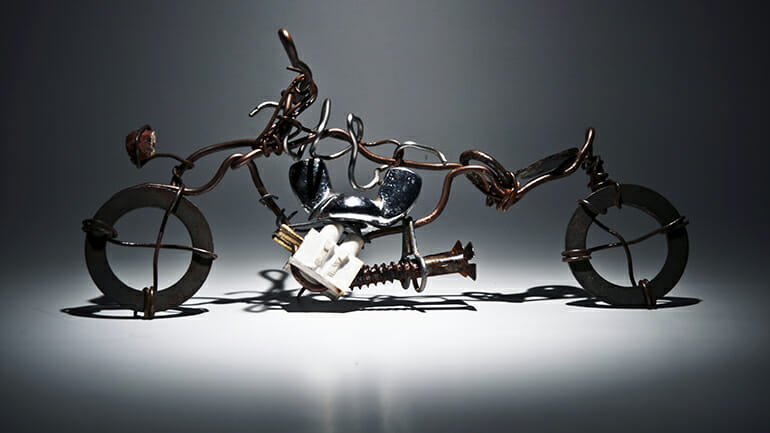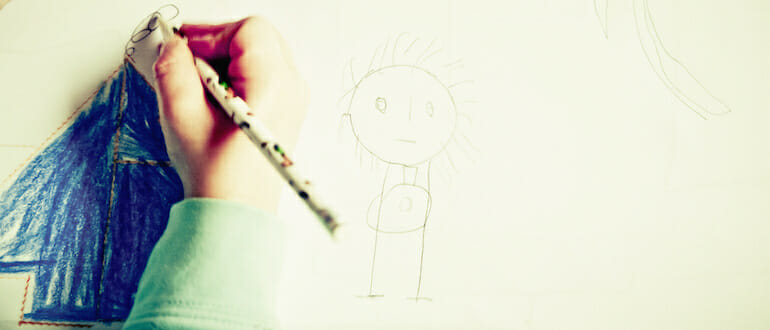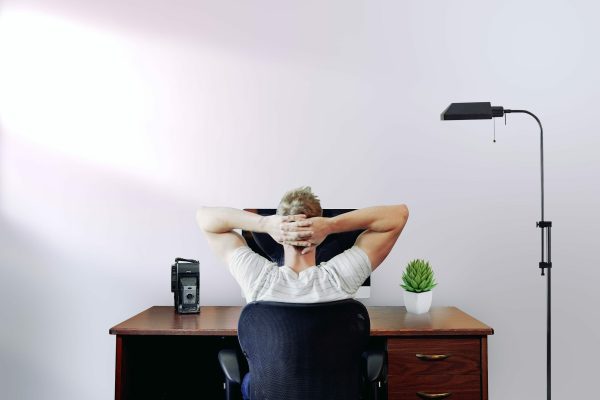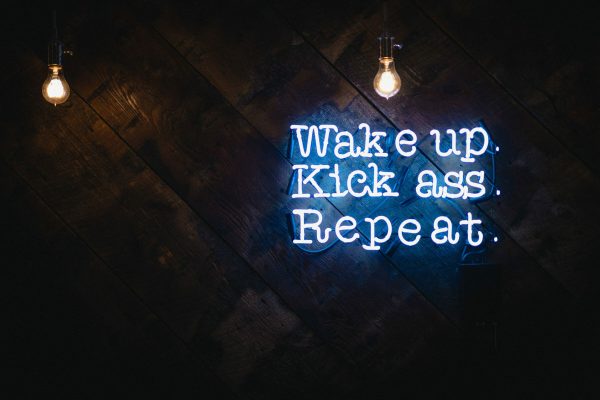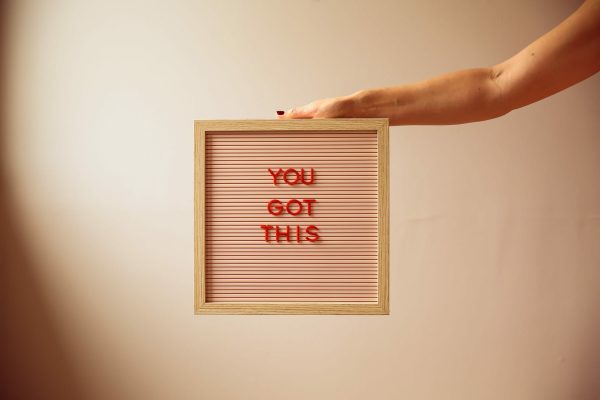I follow a lot of designers and developers on the web; they tweet some amazing links and share great resources and quick doses of inspiration through their work and the work of others.
It's easy to see all of the great work others are doing and sometimes get frustrated — especially when you're stuck, when you've hit a creative roadblock, or when you feel uninspired.
I know because I've been there on more than one occasion.
Even the most creative of us have days where the flow doesn't quite flow, the groove can't quite find its rhythm, and frustration comes as a white screen or blank sheet of sketch paper sits mockingly in front of us.
It would be advantageous if these lapses in creative ability only happened when we had free time in our schedules, but, unfortunately, that is simply not how the world works.
I don't know about you, but for me, these sudden drains on my creative reserves happen right in the thick of the busiest times, when big projects have pending deadlines, clients are waiting, and there is no wiggle room in my schedule.
But here's the problem: Even when I'm just not feeling it, the work still has to get done. I still have to honor my commitments, delivery of my promises, and produce great work the client is thrilled with.
What happens then?
- What happens when you're just not feeling it and you have to get things done?
- What happens when it doesn't come back right away, and you start to fall behind?
- What happens when your frustration turns to worry and stress and your work becomes a weight on your shoulders you can hardly bear?
- What do you do?
What can you do to get back in flow, bolster your creativity, get your groove back, and find inspiration again?
As I mentioned, I've been in this situation more than once, and lucky for you, I've got a few ideas that may help!
10 Ways To Get Your Creative Juices Flowing
1. Walk away and come back later
Often the best thing you can do is just walk away. Stop what you're doing, take a break, and go do something else. Shift your mindset and focus on something else for a while, and then come back to your project fresh.
2. Get outside
The outdoors always does it for me. Being outside, going for a walk, riding my bike, taking a hike, the green plants, the flowers, the fresh air — it helps me relax and let go of the tension or frustration I feel when I'm stuck, and a project just isn't flowing.
3. Color
Grab a coloring book and a box of nice, new, sharp crayons and get creative in a completely different way. Let your mind wander and you just think about the colors and the composition. Coloring is one of my favorite things to do with the kids and with adult coloring books topping bestseller lists, it appears I'm not alone.
In simplest terms, coloring has a de-stressing effect because when we focus on a particular activity, we focus on it and not on our worries. But it also ‘brings out our imagination and takes us back to our childhood, a period in which we most certainly had a lot less stress.'
Elena Santos
An article I recently read in the Huffington Post shares that the practice generates wellness, quietness, and also stimulates brain areas related to motor skills, the senses and creativity.
4. Play a Game
One of my favorite things to do, when I'm stuck and need a break, is to grab and board game and play with the kids. Strategy, planning, achievement — the right game can get you energized and excited. It also provides just the right amount of distraction in a busy day.
For a longer game, we love Settlers of Catan, for shorter games, we're huge fans of Blocks, Quirkle, and anything by GameWright (especially Loot and Gubs).
Play Legos
When you're stuck in one creative rut, use your brain to focus on a different type of creativity. A creative activity study from San Francisco State University demonstrated that people who play with creativity apart from their normal work do better work and are better at dealing with stress.
So get out your Legos and build. Whether it's a set or you're just free building, create something. Build something. Accomplish something with your imagination. It's wildly satisfying, and many CEOs of major companies admit to using the toy to reduce stress and refocus their minds.
Lego is a toy for tinkerers, for designers, artists and storytellers says the Guardian. Even David Beckham reveals that he plays Legos because it calms him down.
5. Exercise
Exercise boosts alertness and sharpens awareness with an increase in blood flow to the brain. It helps prevent illness, back pain, and joint pain. It also helps you feel better and improves your state of mind, making the stresses of work easier to handle because your brain releases serotonin, which in turn stimulates your mood and emotion.
6. Look at design work
When I'm feeling uninspired, I'll often go look at other design work — and not just graphic design or web design. I'll look at architecture design, landscape design, and interior design, and I'll browse “best of” design blog posts and search Google for any random keyword on “design” to see what I get.
There are so many beautiful and interesting visuals and crazy talented people that there is no shortage of visual inspiration to be found.
7. Read a book or a magazine
Another way to shift your mind and change your perspective is to read. I always have at least one business book and one personal, fun book on hand to read. Reading expands your knowledge, inspires thought, creates conversation, and often provides an escape.
If you don't have time to dive into a book, grab a magazine. I subscribe to a variety of business, design, and home/cooking magazines, all which inspire me in different ways.
8. Design something for fun
It's easy to get stuck in the grind and forget why we love what we do. To move from client project to client project to client project to client project — with no time for creative play. This grind, over time, begins to erode our creativity and the enjoyment we find in creating, designing, and building. Our work becomes a constant state of checking boxes instead of inspiring great work.
So stop. Stop the client work and make time for design for fun. Make time to build something for fun. To do it just because you want to do, to create the result you want to create, that isn't revised, changed, or messed up by someone else. Take the time to do what you do because you love it and remember why you chose this field, this path, this career — and then do it more.
9. Get help
Working 12+ hour days, 6-7 days a week, and pulling all-nighters isn't a badge of honor. It's a reflection of poor personal management, time management, and project management. It brings to light problems that aren't being dealt with like undercharging, overdelivering, not setting clear expectations, not enforcing boundaries, and not accurately estimating workflow and timelines.
Don't be a martyr. Everyone goes through this phase of business at some point and they quickly learn that is not sustainable, not only for mental health reasons, for for physical health reasons.
GET HELP. Reach out to peers and friends and ask questions. Get a mentor or a business coach and ask questions. Join a mastermind group and ask questions. Then take action and create change. You'll be amazed at how much better you feel and how much more creative you are when you're not turning the candle at both ends and you have support to help you grow and improve.
10. Sleep
Many of us have had the experience of waking up with a great idea, or having an insight while in the shower right after waking up. And many famous creators have said that they got their ideas while dreaming or sleeping. But there hasn’t been any scientific, experimental evidence of the power of sleep–until now.
Keith Sawyer
In 2004, Nature published a study titled “Sleep inspires insight” by Ulrich Wagner and associates. In the study, participants began by solving a series of puzzles. They then took an eight hour break and came back to another round of puzzles with a secret rule, that once discovered, made solving the puzzles much easier.
During the break, some participants stayed awake and some slept. Guess which participants did better?
Sawyer, in his blog Sleep On It, explains the study and the actual puzzles participants had to solve. He also points out that those who slept were more than twice as likely to discover the rule!
Basically this study confirms that if you're stuck, you should go to bed and come back to your problem or project in the morning. Or, if you have time in the day, take a nap.
In an article for Fast Company, Belle Beth Cooper states that sleeping gives your body a chance to deal with everything that happened during the day, repair itself, and reset for tomorrow, and that studies of napping have shown improvement in cognitive function, creative thinking, and memory performance.
- A study of 23,681 Greek men over six years showed that those who napped three times a week had a 37% lower risk of dying from heart disease.
- Jane Langille writes that naps can improve many things: increase alertness, boost creativity, reduce stress, improve perception, stamina, motor skills and accuracy, enhance your sex life, aid in weight loss, reduce the risk of heart attack, brighten your mood and boost memory.
- The Huffington Post reports on a study by study Andrei Medvedev, Ph.D. (assistant professor at Georgetown University’s Center for Functional and Molecular Imaging, in Washington, D.C.) that the right side of the brain is far more active during a nap than the left side, which stays fairly quiet while we’re asleep. Despite the fact that 95% of the population is right-handed, with the left side of their brains being the most dominant, the right side is consistently the more active hemisphere during sleep.
So go ahead, take a nap and feel good about it!
Remember, you need to feed your creativity
For most of us, creativity isn't like a light switch. You can't just turn it on and off whenever you want. There are ebbs and flows to it, sometimes we're in tune with it, and sometimes we can't quite find the tune. And that's okay.
The key is to
Instead, take a break, get outside, color, play a game, play Legos, exercise, look at design work, read, design for fun, get help, or sleep. Or try any other activity to helps you refocus and re-energize your mind.
Trust me, you'll be more productive and you'll get your creativity back — it works for me every time!
